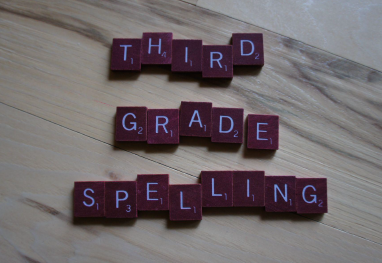
Third Grade Spelling Patterns

Overview
Students will identify spelling patterns in words. Students will engage in a variety of online spelling activities through Spelling Training and Word Wall to identify and practice spelling patterns in words.
Learning Objectives
Students will:
- Be able to identify common spelling patterns found in words.
- Be able to read grade-appropriate irregularly spelled words and decode multisyllable words.
- Be able to decode words with common Latin suffixes.
Vocabulary
Vocabulary Words:
- Vowel: Vowels are letters representing a vowel sound, such as a, e, i, o, u.
- Consonant: Consonants are letters in language that are not vowels.
- Base word: A base word is a main or important word to which other things
are added.
- Suffix: A suffix is a morpheme added at the end of the word. (A morpheme is the smallest meaningful unit in a language such as the letters "er" or "s" added to a word)
- Prefix: A prefix is a word, letter, or number placed before another.
- Compound word: A compound word is a word made up of two or more existing words, such as steamship.
- Contraction: A contraction is a process of shortening a word with the use of apostrophes.
- Apostrophe: An apostrophe is the punctuation mark used to indicate the omission of letters.
- Digraph: A digraph is the combination of two letters representing one
sound.
Pre-planning
To prepare for this lesson:
-
The teacher will introduce 15 spelling words with common patterns (find the list here). Note: The teacher can create additional spelling lists with Spelling Training.
-
Lists of words for these activities have been drawn from Words Their Way by Donald Bear ISBN 978-0131113381.
-
Students will identify patterns common in words.
-
Dry-erase boards and markers can be used for writing words with spelling patterns for the week.
-
Teachers will create class rosters and activities in Word Wall.net beforehand. Online activities can be done to introduce, practice, or review spelling words for a weekly spelling test.
-
Watch the video Spelling Training
-
Watch the video Word Wall to learn how to use the application.
-
Play the sample game created at Word Wall.
Accommodations
See Accommodations Page and Charts on the 21things4students.net site in the Teacher Resources.
Steps
Directions for this activity:
1. Before practice, the teacher will create a class roster and activity in WordWall.net.
2. The teacher will provide a weekly spelling list to students. This can be created in Spelling Training. Here is a sample list that can be used with the students.
3. The teacher will lead students in writing exercises (dry erase boards & markers) with words with similar letter combinations, prefixes, or suffixes.
4. Teachers will assist students in navigating to websites if needed. The students will practice their spelling words.
5. Students will play and learn about double consonants at Word Wall.
Assessment Options
Different options for assessing the students:
- Observations
- Check for understanding
- Weekly Spelling Test-teacher dictates words as students write sounds they hear.
- WordWall.net Results Page- if the roster is included, can provide feedback for confidence with spelling words.
MITECS COMPETENCIES & ISTE STANDARDS
MITECS: Michigan adopted the "ISTE Standards for Students" called MITECS (Michigan Integrated Technology Competencies for Students) in 2018.
Computational Thinking
5a. Students formulate problem definitions suited for technology-assisted methods such as data analysis, abstract models and algorithmic thinking in exploring and finding solutions.
Devices and Resources
Device: PC, Chromebook, Mac, iPad
Browser: Chrome, Safari, Firefox, Edge, ALL
Websites:
Spelling List
CONTENT AREA RESOURCES
ELA
- Read grade-appropriate irregularly spelled words.
- Decode multisyllable words.
- Decode words with common Latin suffixes.
- Know and apply grade-level phonics and word analysis skills in decoding words. Identify and know the meaning of the most common prefixes and derivational suffixes.
Credits
This task card was created by Joe Cribbs, St. Charles Community Schools, August 2021.


